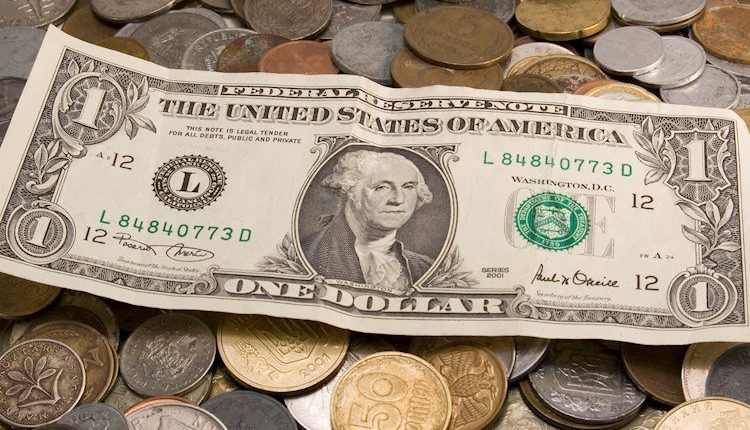- The US Dollar trades higher on Monday as US government shutdown risk escalates.
- In the background traders will be on edge for US GDP numbers later this week.
- The US Dollar Index resides near the six-month highs.
The US Dollar (USD) made clear why it deserved its status as king after a quite volatile week. The US Federal Reserve could not have been more clear and confirmed yet again that rates in the US will stay higher for longer. This puts the US Dollar as the strongest partner in most trading pairs due to interest rate differentials.
Amidst all the noise on the macroeconomic front, traders did not really care about the US government shutdown until this coming Friday evening. When House Speaker Kevin McCarthy sent all Representatives packing for the weekend last Friday, traders became aware that a deal might again not happen until the final hour. This means some risk premium, on the back of a weaker US Dollar, might emerge as days pass without any hopeful signals from Capitol Hill on a possible deal.
Daily digest: US Dollar roars on Monday
- US House Speaker Kevin McCarthy says he can bring a deal to the floor by Tuesday in order to avoid a US Government shutdown.
- A very calm start of the week has begun with the Chicago Fed National Activity Index for August, which went from 0.12 to -0.16. A small contraction, together with the previous number revised down to 0.07.
- The US Dallas Fed Manufacturing Business Index for August is expected to come out near 14:30 GMT and was in contraction at -17.2 for July.
- The US Treasury will be auctioning 3-month and 6-month bills at 15:30 GMT at elevated rates.
- A big dispersion in the equity markets shows its face at the start of the week in Asia: Japanese stocks rally with both the Topix and the Nikkei in the green. China, meanwhile, sees Hong Kong’s Hang Seng Index tank near 1.5% as Evergrande cancelled a meeting with creditors to renegotiate terms. European equities are sinking lower with the German Dax down 1%. US futures are in the red, though could recover near the US opening bell.
- The CME Group FedWatch Tool shows that markets are pricing in a 77% chance that the Federal Reserve will keep interest rates unchanged at its meeting in November. The recent turmoil on Capitol Hill and the United Auto Workers (UAW) strike could force the Fed to keep rates unchanged through the end of the year.
- The benchmark 10-year US Treasury shoots higher to hit 4.5089% with the US opening bell just around the corner, making a new multi-year high.
US Dollar Index technical analysis: back on top
The US Dollar looks to be stuck in a stalemate with the rate differential keeping the US Dollar holding an advantage against most major G20 currencies. On the other side, the automaker strike in Detroit and possible US government shutdown could weigh on the Greenback over the short term. The US Dollar Index (DXY) is looking for direction in this difficult environment.
The US Dollar Index opens up above 105.50 this Monday and shows small signs of possibly going higher. Should the DXY close above the yearly high near 105.88, expect the US Dollar to follow on with more bullish moves in the medium term. US yields and the unwinding of the US strike and government shutdown will remain crucial to support current levels in the DXY.
On the downside, the 104.44 level seen on August 25 kept the Index supported on Monday, halting the DXY from selling off any further. Should the uptick that started on September 12 reverse and 104.44 give way, a substantial downturn could take place to 103.04, where the 200-day Simple Moving Average (SMA) comes into play for support.
Interest rates FAQs
Interest rates are charged by financial institutions on loans to borrowers and are paid as interest to savers and depositors. They are influenced by base lending rates, which are set by central banks in response to changes in the economy. Central banks normally have a mandate to ensure price stability, which in most cases means targeting a core inflation rate of around 2%.
If inflation falls below target the central bank may cut base lending rates, with a view to stimulating lending and boosting the economy. If inflation rises substantially above 2% it normally results in the central bank raising base lending rates in an attempt to lower inflation.
Higher interest rates generally help strengthen a country’s currency as they make it a more attractive place for global investors to park their money.
Higher interest rates overall weigh on the price of Gold because they increase the opportunity cost of holding Gold instead of investing in an interest-bearing asset or placing cash in the bank.
If interest rates are high that usually pushes up the price of the US Dollar (USD), and since Gold is priced in Dollars, this has the effect of lowering the price of Gold.
The Fed funds rate is the overnight rate at which US banks lend to each other. It is the oft-quoted headline rate set by the Federal Reserve at its FOMC meetings. It is set as a range, for example 4.75%-5.00%, though the upper limit (in that case 5.00%) is the quoted figure.
Market expectations for future Fed funds rate are tracked by the CME FedWatch tool, which shapes how many financial markets behave in anticipation of future Federal Reserve monetary policy decisions.
Read the full article here

